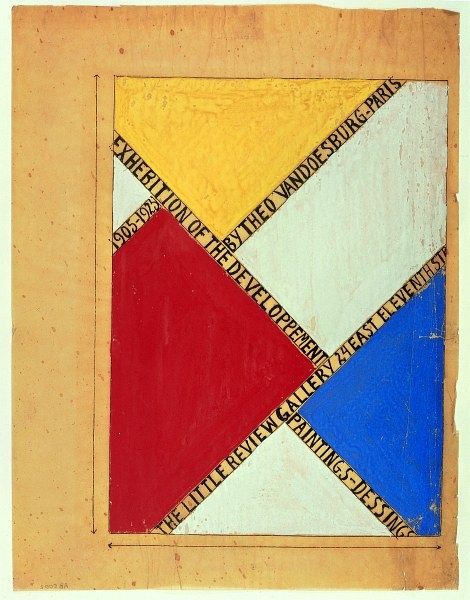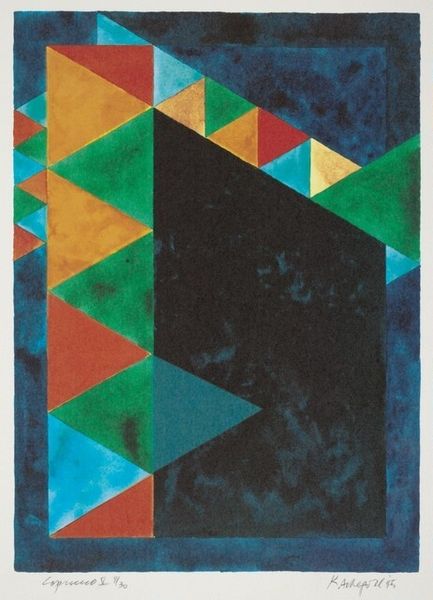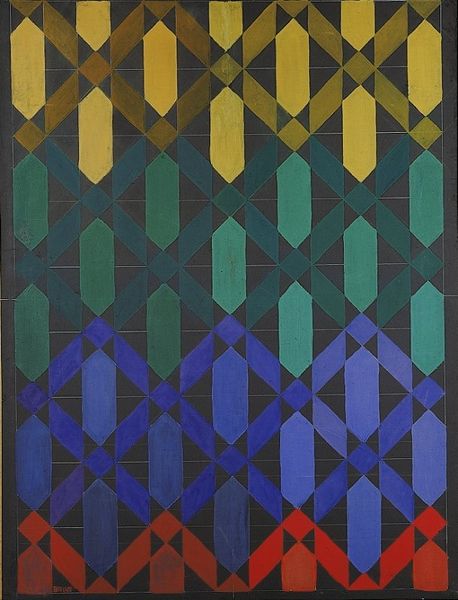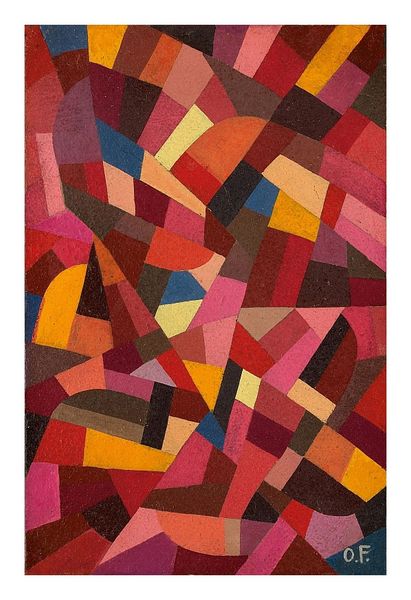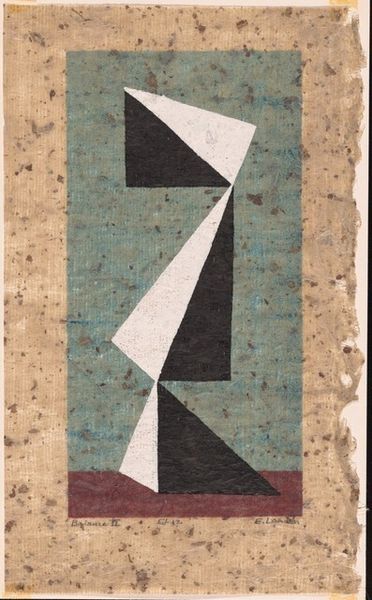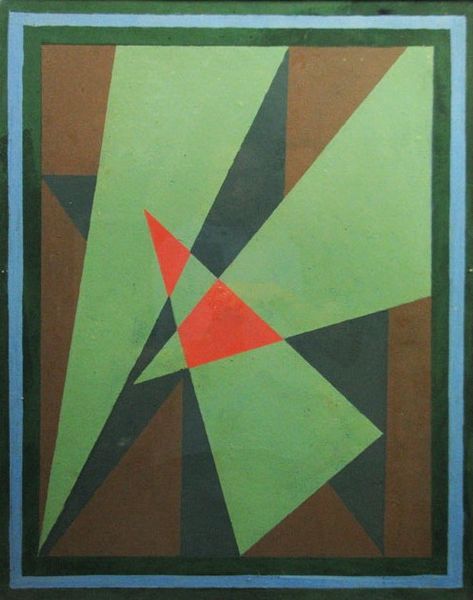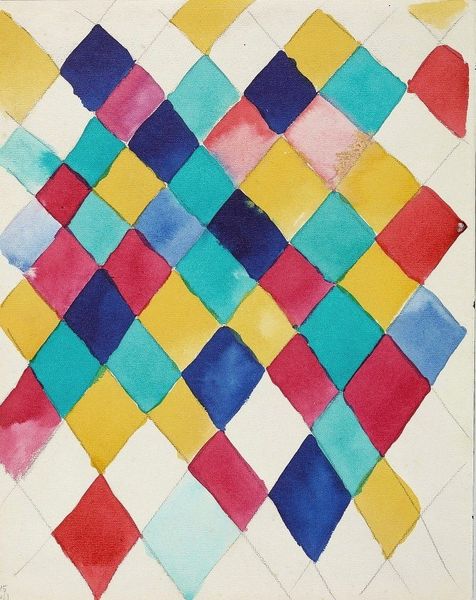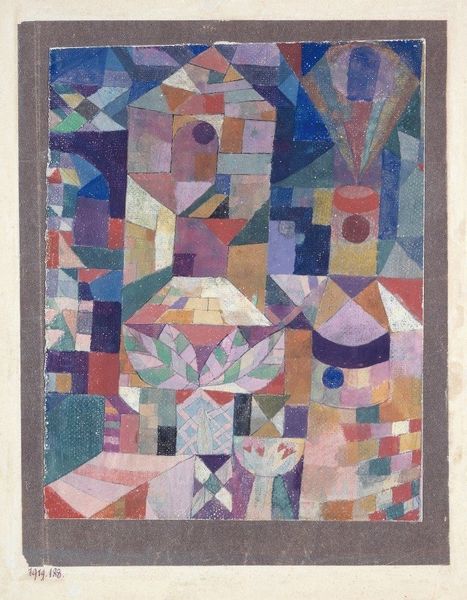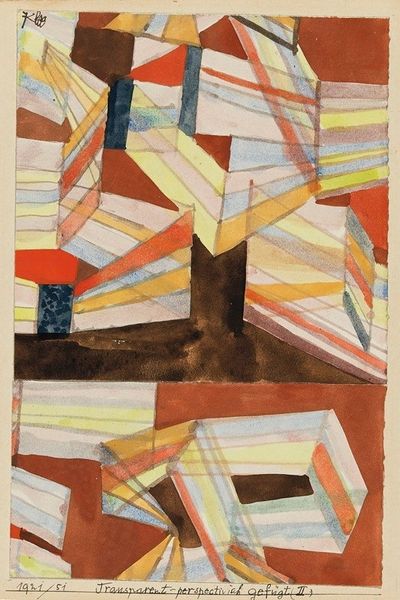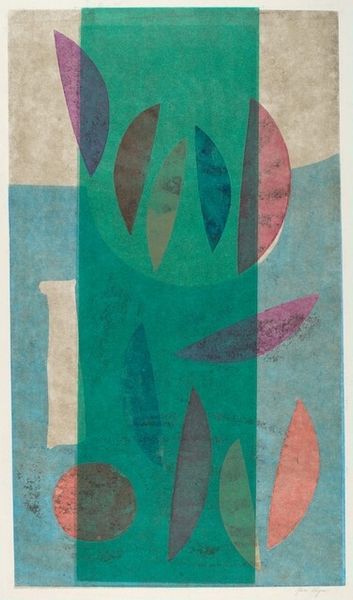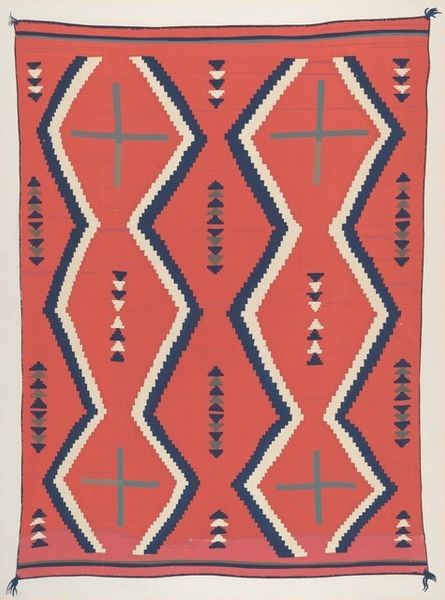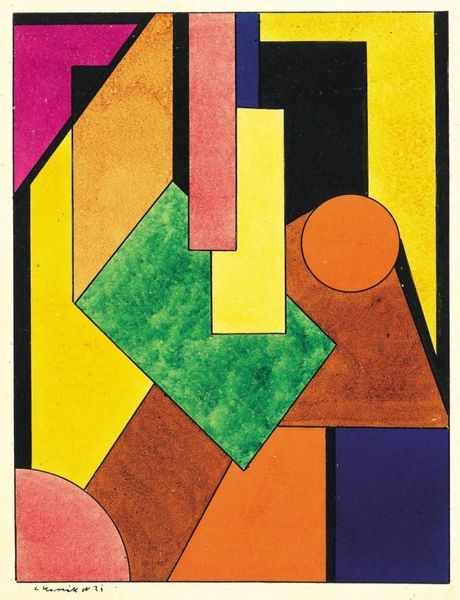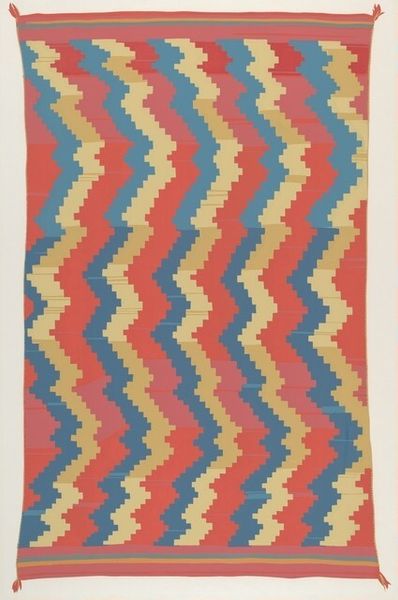
print, watercolor
#
contemporary
#
abstract painting
# print
#
pop art
#
painted
#
watercolor
#
geometric
#
geometric-abstraction
#
abstraction
#
modernism
Dimensions: image: 37.3 x 27 cm (14 11/16 x 10 5/8 in.) sheet: 43.8 x 33.3 cm (17 1/4 x 13 1/8 in.)
Copyright: National Gallery of Art: CC0 1.0
Curator: What an interesting composition. It's simultaneously calming and unsettling, isn't it? The colours evoke a sense of earthy groundedness, but the sharp angles introduce an element of instability. Editor: Well, let's unpack that a bit. We're looking at "Capriccio VII," a print created by Keith Anden Achepohl in 1995, showcasing an arrangement of geometric forms primarily rendered in watercolor. Curator: 1995... considering the socio-political climate of that time, it seems this piece engages with the anxieties of late-stage capitalism. The fragmentation mirrors a sense of societal disconnect and the instability of traditional structures. The contrast between organic washes and rigid lines really speaks to that tension. Editor: I see your point about the fragmentation. I'm drawn to how the watercolor, a seemingly delicate medium, is employed to create such bold, defined shapes. It almost feels like a conversation between process and control. Did the artist explore printmaking much more, or was it the watercolors at the source of his material practice? Curator: I think considering it in dialogue with the AIDS crisis and the ongoing culture wars provides an even deeper reading of the visual rhetoric. Geometric abstraction has often served as a tool to explore societal structures but through watercolor's materiality, he almost makes it breathe, rendering visible, those structural forces we don't want to see. Editor: It makes you consider the amount of conscious, physical labor required to produce what initially seems quite straightforward. Achepohl has achieved remarkable saturation and color control. How he navigates the inherent limitations, I want to better understand what materials did he use for these techniques? It's as if Achepohl has taken a traditionally 'soft' medium and imbued it with this architectural sensibility, constructing a very palpable sense of controlled expression. Curator: Yes, absolutely! Looking at it through a critical lens, we recognize the power dynamics embedded within the supposedly neutral forms. The work, while aesthetically pleasing, urges us to contemplate the fragility of stability in both personal and public spheres. Editor: I leave this now really appreciating Achepohl's commitment to this media! Curator: Indeed. It leaves us contemplating the interplay of material and message, offering much food for thought.
Comments
No comments
Be the first to comment and join the conversation on the ultimate creative platform.
